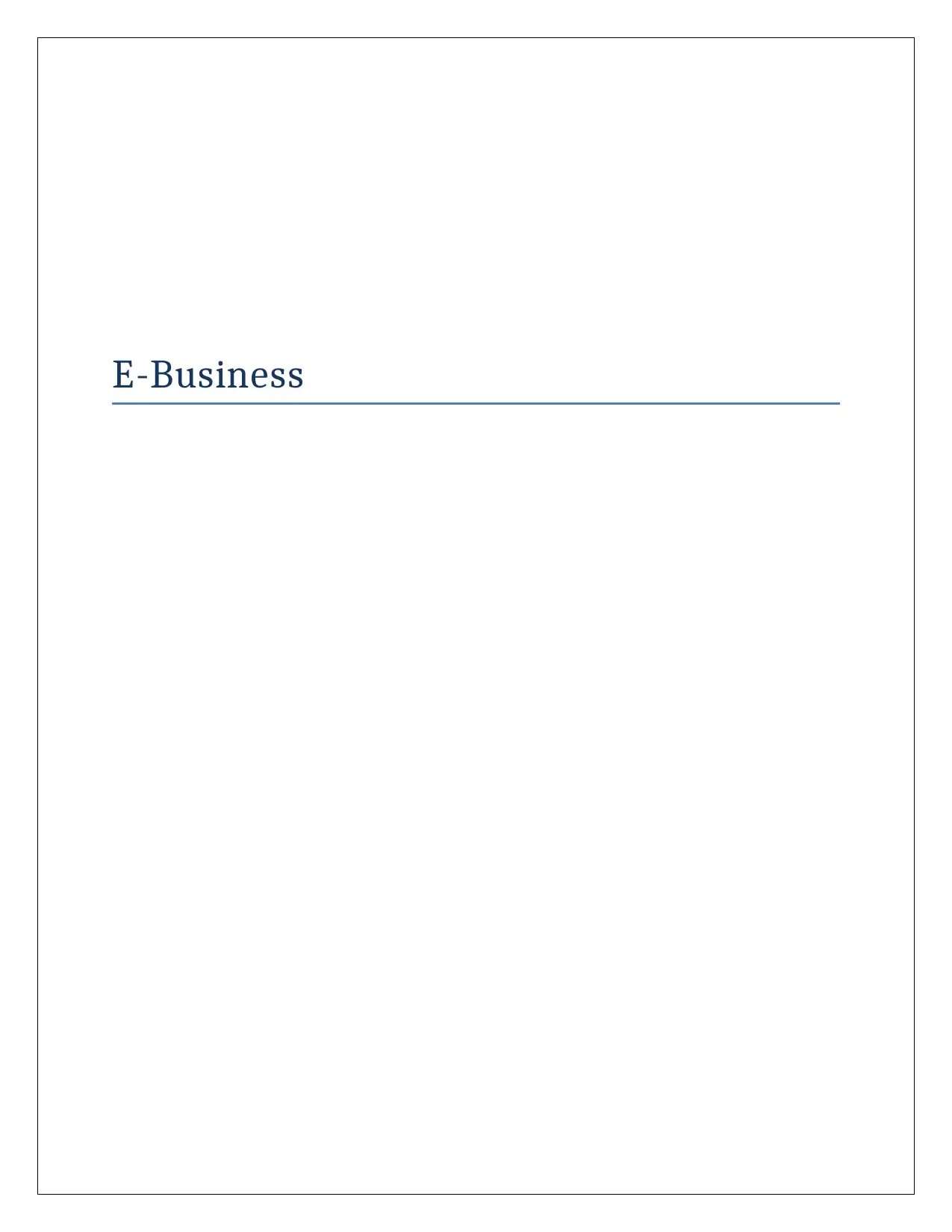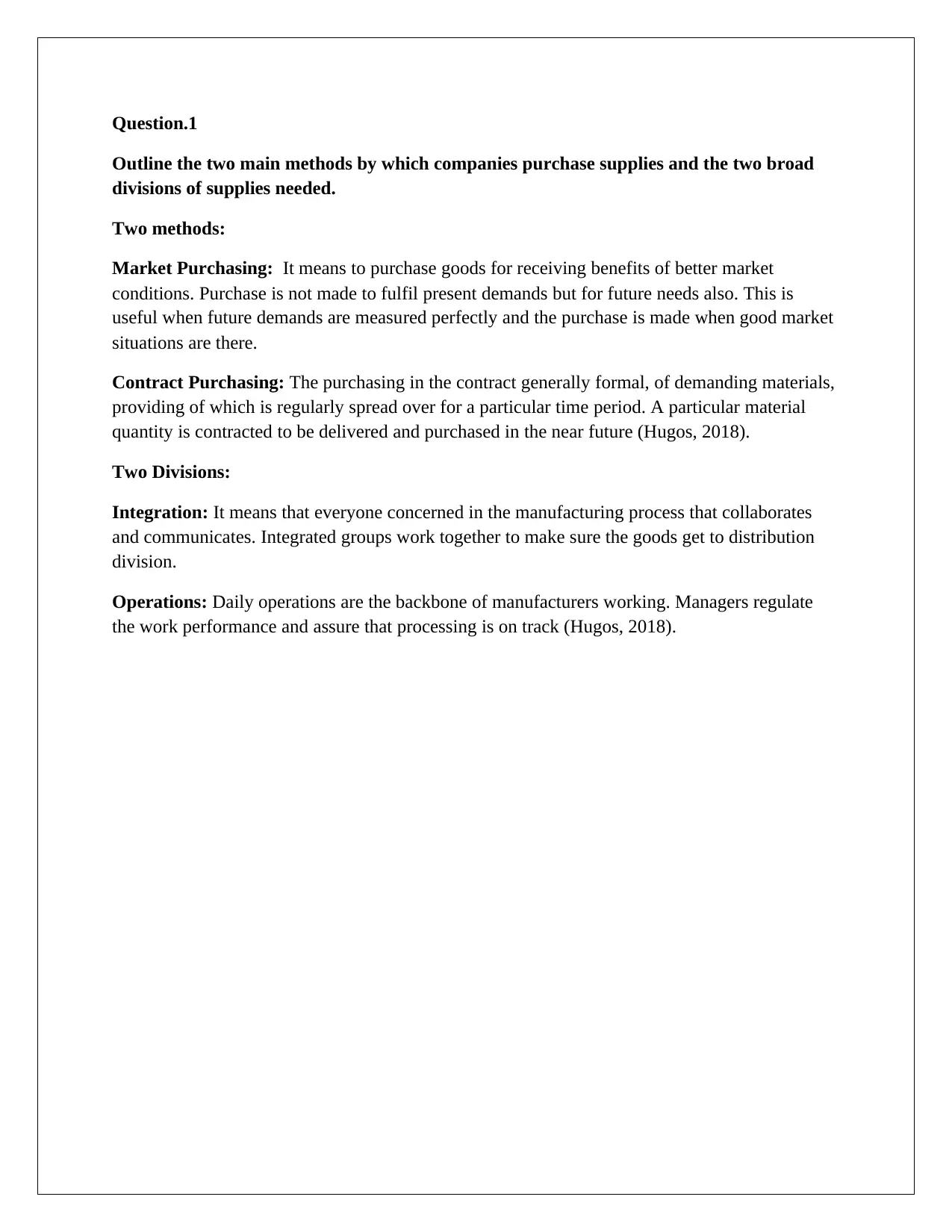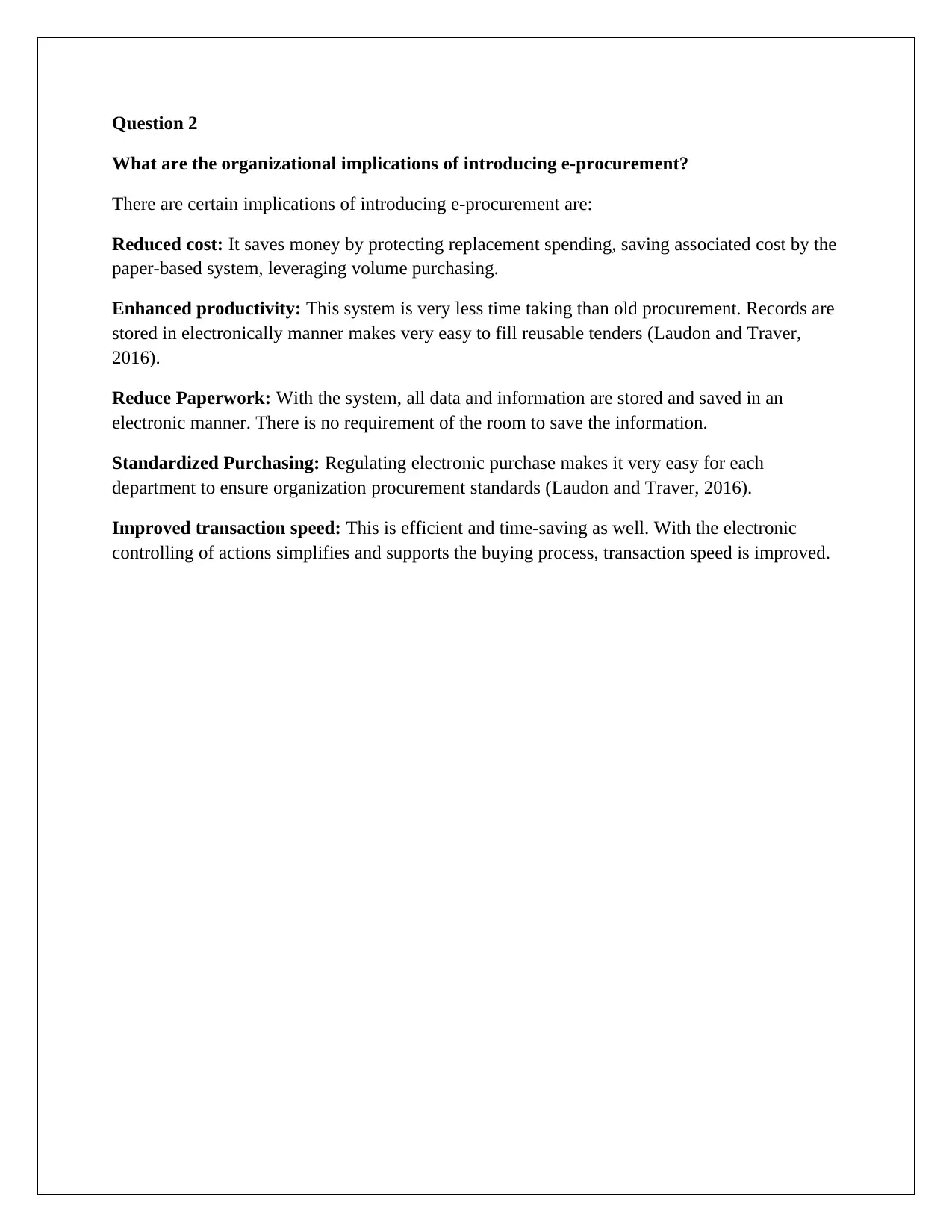E-Business Assignment: Purchasing Methods and E-Procurement Overview
VerifiedAdded on 2022/10/10
|4
|389
|21
Homework Assignment
AI Summary
This e-business assignment explores two main methods of purchasing (market and contract) and the two broad divisions of supplies (integration and operations). It also examines the implications of introducing e-procurement, including cost reduction, increased productivity, reduced paperwork, standardized purchasing, and improved transaction speed. The assignment references key concepts in supply chain management and e-commerce, highlighting how e-procurement streamlines processes and enhances business efficiency. The solution provides a clear overview of each aspect, supporting understanding of these crucial e-business concepts. The assignment is a valuable resource for students studying e-business and related fields.
1 out of 4







![[object Object]](/_next/static/media/star-bottom.7253800d.svg)